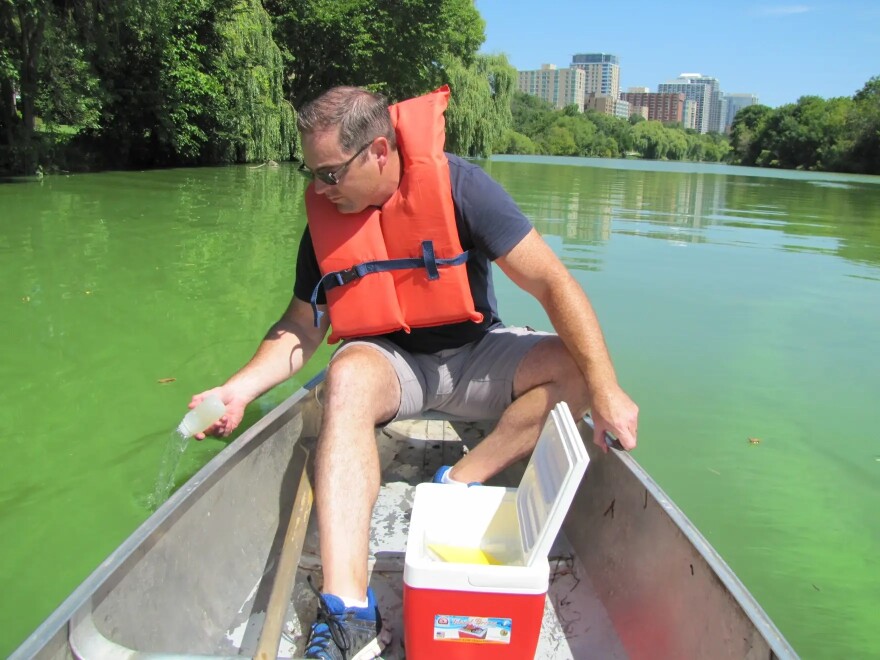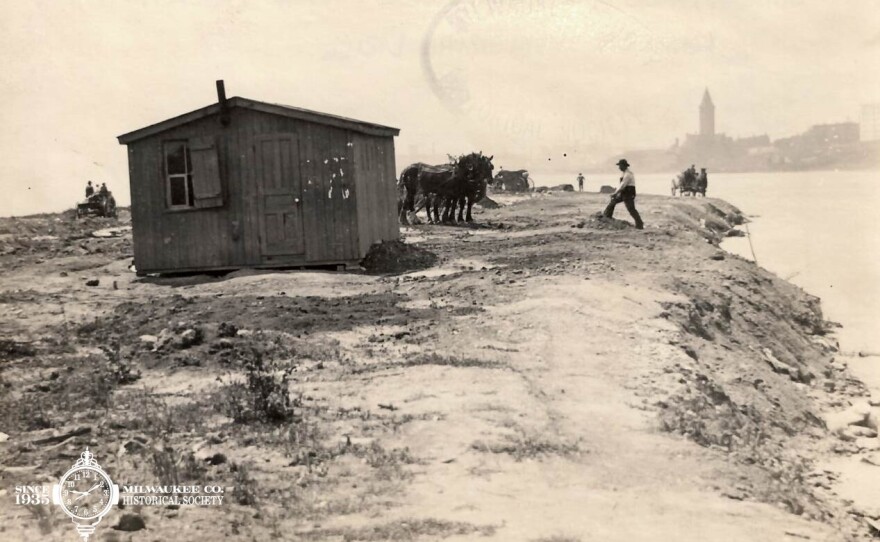Loads of people enjoy Milwaukee’s lakefront, including Shorewood resident Margaret Barron. She spent time at Bradford Beach with her children and, years later, at the Veterans Park lagoon with her grandchildren.
"We used to go to the lagoon and rent the boats — the swan boats," Barron says.

So, when the lagoon suddenly looked dramatically different, Barron noticed. A striking number of trees along the east side of the lagoon had been removed.
"It happened very suddenly. I mean it was quick. I would say within less than a year they had died. And we wondered if it was — did the water level rise? Were there some kind of bugs?" Barron asks.

What happened to the trees?
It turns out bugs were to blame, and the problem has been festering for years, according to Peter Bratt. He’s Milwaukee County Parks’ Director of Operations and Skilled Trades.
"This side, the east side of Veterans lagoon, as the questioner mentioned, has a lot of dead ash trees. Since 2011, Milwaukee County has just been hammered with Emerald ash borer," Bratt says.
The invasive metallic-green beetle has eaten the life out of countless ash trees in Canada and the U.S. — including right here in Milwaukee, next to the lagoon.
"So we removed about 2.7 acres of trees. I’d say probably at least 50," Bratt says.
Four willow trees were also removed. Bratt says they had died of old age and were in danger of falling.
Where the trees once stood now looks like storm-ravaged terrain. But it’s just a drop in the lagoon’s story.
History of the lagoon
Milwaukee’s lakefront was created as part of a massive landfill project that began in 1907.
The lagoon was originally a coastal bay connected to Lake Michigan — in fact, people swam there.
By the early 1960s, the lagoon was cut off from the lake as Milwaukee County filled 100 acres that eventually became Veterans Park.
"It really became a detention or retention pond for stormwater that is directed here from the street grid around it," says Sarah Toomsen, Milwaukee County Parks’ assistant director of planning.
Still, the lagoon remained popular for fishing and paddleboarding. It even hosted a water-ski show and dragon boat festival.
But, Toomsen says, "The water quality of the lagoon has been changing over time, and we’d consider it now hypereutrophic."
If that sounds bad to you, that’s because it is.
"It’s really unhealthy for the habitat that’s within and around it," Toomsen says.
Toxic algae plagues lagoon

Researcher Todd Miller has been at the forefront of figuring out what’s going on in the lagoon. The UW-Milwaukee public health professor discovered, with his students, concerning concentrations of algal toxin in the lagoon.
"So, we worked with County Parks and the (Milwaukee) Health Department, and we got the signs out and limited recreation that would potentially result in accidental ingestion. I mean, that’s the thing with these toxins — you really have to ingest them," Miller says.
This particular blue-green algae is toxic. It can cause flu-like symptoms, rashes, and respiratory distress.
Miller says his research found the leading cause of the toxic algae comes from the lagoon itself.
"The bottom, the sediments in the lagoon. And those nutrients have just built up over decades," he says.
Milwaukee County Parks is now working on a fix thanks to a $300,000 Great Lakes Restoration Initiative grant.
Listener and lakefront fan Margaret Barron shares her hopes for the lagoon.
"I would like to see it cleaned up and maybe even some type of fish that kids could fish. That would be a wonderful thing in conjunction with the swan boats. But you’d have to be really sure that the fish were safe, or maybe just catch and release," she says.
Like Margaret, you can keep an eye out — there may be more changes coming to the Veterans Park lagoon.
_














